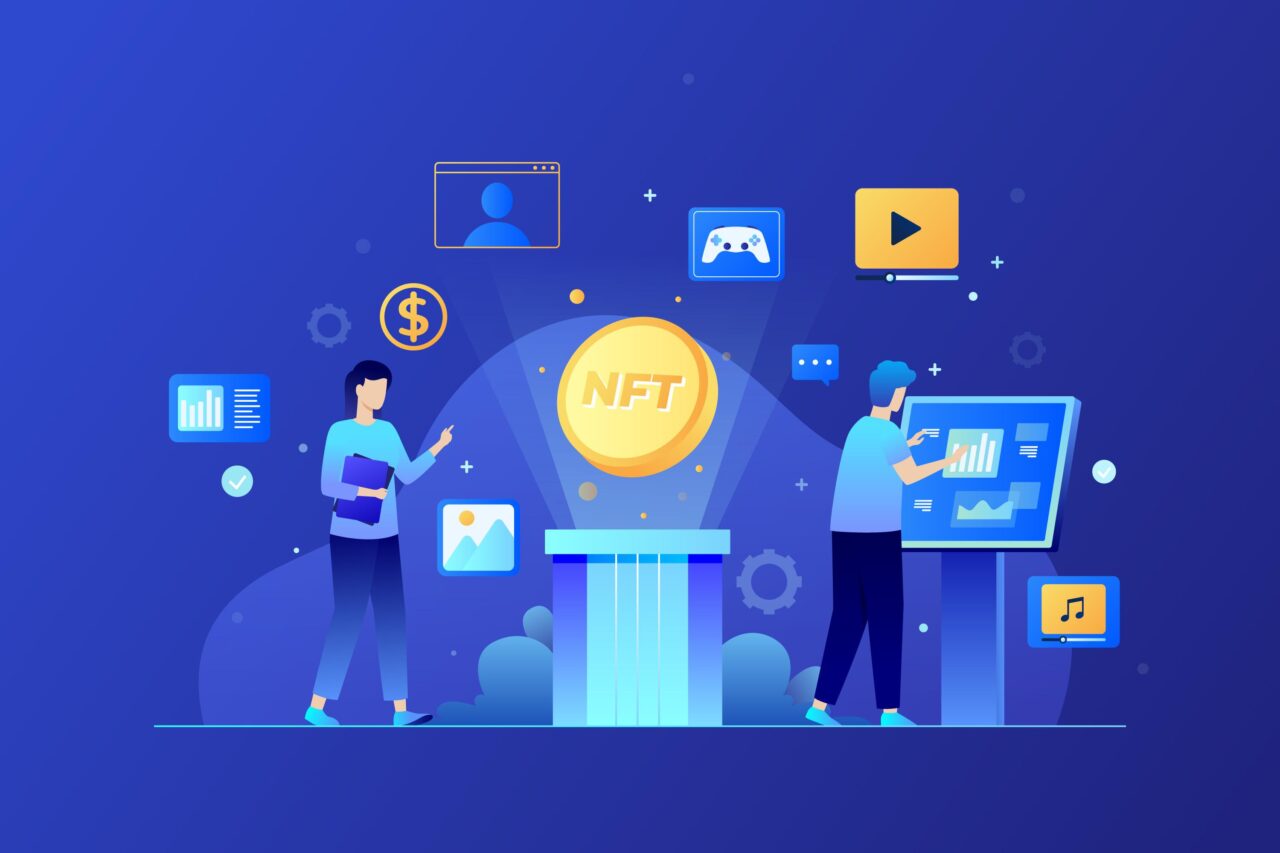(NFT): What It Means and How It Works
What Is a Non-Fungible Token (NFT)?
Non-fungible tokens, or NFTs, are unique digital assets such as artwork, digital content, or videos that have been tokenized using blockchain technology. Essentially, NFTs are special identification codes created from metadata through an encryption process. These unique tokens are then stored on a blockchain, while the actual assets they represent are kept elsewhere. The unique link between the token and the asset is what makes NFTs distinct.
Moreover, NFTs can be bought, sold, or traded for money, cryptocurrencies, or even other NFTs. The value of an NFT depends on what the market and the owners believe it is worth. For example, imagine you draw a smiley face on a banana, take a photo of it, and then tokenize that image on a blockchain. Whoever holds the private keys to that token owns the rights you have assigned to it.
It is important to note that while cryptocurrencies are also tokens, they are fungible. This means that two identical cryptocurrencies from the same blockchain can be exchanged one for the other without any difference in value. In contrast, even if two NFTs look the same, they are not interchangeable because each one is unique.
Key Takeaways About NFTs
- Uniqueness: NFTs are unique cryptographic tokens that exist on a blockchain and cannot be duplicated.
- Representation: They can represent both digital items, like artwork, and real-world items, such as real estate.
- Efficiency and Security: Tokenizing tangible assets makes buying, selling, and trading them easier and more efficient. Additionally, it reduces the chance of fraud.
- Versatility: NFTs can represent personal identities, property rights, and more.
- Popularity: Initially, collectors and investors were drawn to NFTs as public interest grew. However, their popularity has since fluctuated.

History of Non-Fungible Tokens (NFTs)
NFTs have been around longer than their recent surge in popularity suggests. The first NFT, titled “Quantum,” was created by Kevin McCoy in 2014 on the Namecoin blockchain. It was later minted on Ethereum and sold in 2021. This marked the beginning of NFTs gaining mainstream attention.
NFTs follow specific standards to ensure their functionality and interoperability on the blockchain. The most common standard is ERC-721, which stands for Ethereum Request for Comment #721. This standard defines how ownership is transferred, how transactions are confirmed, and how safe transfers are handled by applications.
Later, the ERC-1155 standard was introduced six months after ERC-721. This new standard improves upon the original by allowing multiple NFTs to be managed within a single contract. As a result, it reduces transaction costs and makes the process more efficient.
How NFTs Work
NFTs operate on blockchain networks, which are digital ledgers shared and updated by all participating computers, known as nodes. Each NFT contains metadata that makes it unique. When an NFT is created, or minted, its details are recorded on the blockchain. This ensures that the NFT cannot be duplicated or altered once it is created.
Because NFTs are stored on a blockchain, they provide a secure and transparent way to verify ownership. This security feature makes NFTs attractive for artists, creators, and collectors who want to protect their digital creations and investments.
The Future of NFTs
NFTs continue to evolve and expand into various industries. From art and music to real estate and personal identity, the potential applications of NFTs are vast. As technology advances, NFTs may become even more integrated into our daily lives, offering new ways to own, trade, and interact with digital and physical assets.
However, it is crucial to approach NFTs with an understanding of their complexities and risks. The market can be volatile, and the value of NFTs can fluctuate significantly. Therefore, potential investors should conduct thorough research and consider the long-term prospects of NFTs before diving in.









